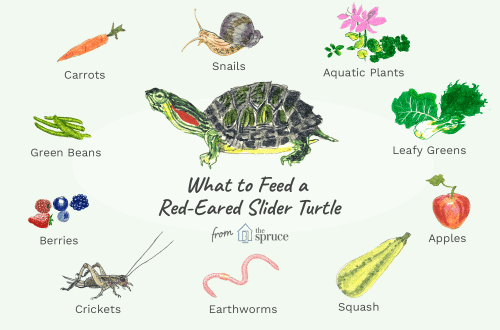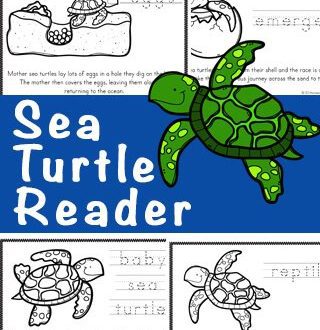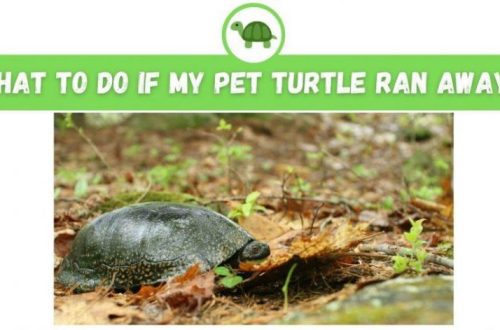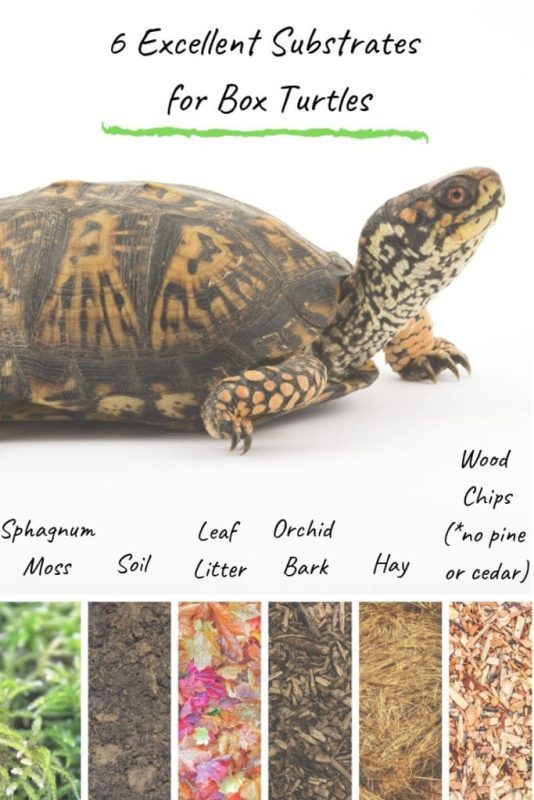
Soil for the terrarium of a land turtle: which filler is better to choose?
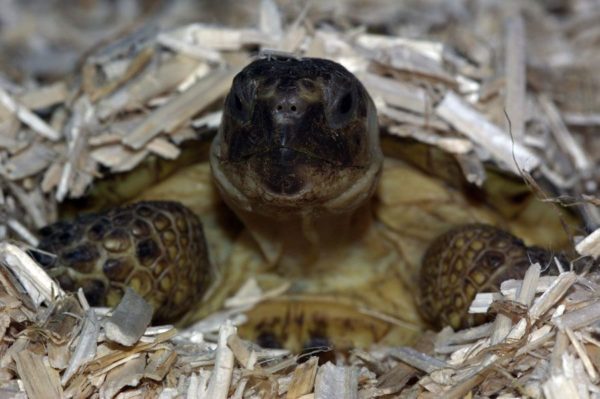
The soil for a land tortoise in a terrarium is the most important attribute responsible for hygiene, psychological comfort and health of the reptile. Consider the existing fillers and figure out which one is better.
Contents
Functions and features of the soil
In the wild, turtles dig in the ground to create shelter from frost or the scorching sun. Active limb work maintains muscle tone and prevents deformities. Soil is also needed for the proper development of the shell. Without proper load, the carapace is covered with tuberosities.
A good filler for a terrarium should be:
- not dusty;
- absorbent;
- non-toxic;
- dense and heavy;
- digestible (digestible).
Types of excipients
The variety of fillers offered makes it difficult for inexperienced owners to make the right choice, so we will consider the advantages and disadvantages of possible soil options.
Moss
Suitable for reptiles: tropical and other species living in humid environments.
Pros:
- provides a humid microclimate;
- aesthetics;
- digestible;
- allows you to burrow;
- absorbs and retains liquid;
- does not leave dirt;
- antibacterial.
Cons:
- not suitable for grinding claws;
- dusty and loses aesthetics when dried.
Recommended use:
- choose sphagnum or Icelandic moss;
- avoid dry moss intended for indoor plants;
- moisten the moss to create the desired microflora.
Sand
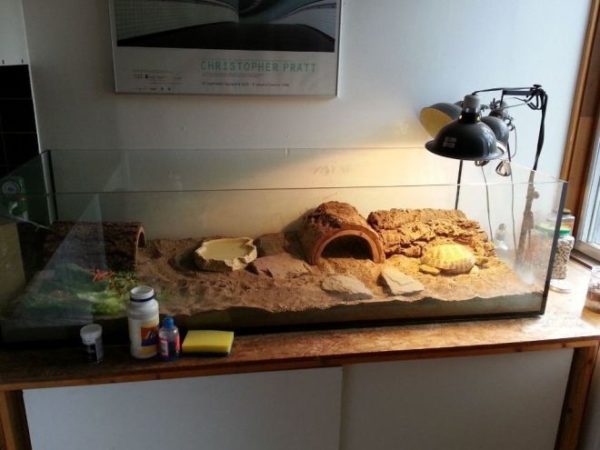
Suitable for reptiles: desert.
Advantages:
- cheapness;
- sustainability;
- allows you to burrow;
- absorbs and retains liquid.
Disadvantages:
- dusty;
- not digested;
- does not keep the shape of the hole and heat;
- provokes the appearance of bacteria in the presence of feces.
Usage Tip:
- sand for turtles should be well polished and sifted;
- do not use building sand;
- protect the feeding area from sand;
- choose quartz sand that has gone through additional processing;
- be sure to spray the sand to avoid dryness.
Lands

Suitable for reptiles: tropical, steppe.
Pros:
- allows you to burrow;
- maintains the shape of the burrow;
- absorbs and retains liquid.
Cons:
- land from the forest is dangerous for insects living in it, and flower land may contain pesticides;
- causes eye irritation;
- soils the turtle and the walls of the terrarium;
- not suitable for grinding claws;
- does not give off heat.
Features:
- for the Central Asian tortoise, earth mixed with sand is suitable;
- in the absence of other types of fillers, fill the bottom with expanded clay;
- avoid ready mixes containing peat or harmful pesticides;
- be sure to sort out the land taken from the forest and ignite it for half an hour.
Shell rock
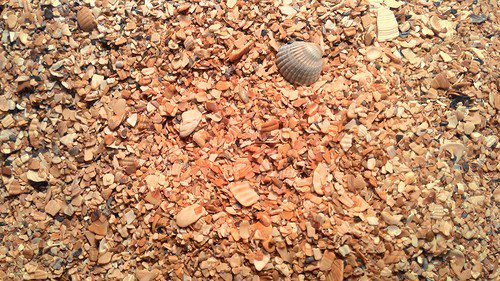
Suitable for reptiles: desert, steppe.
Advantages:
- additional source of calcium;
- allows you to burrow;
- retains body moisture;
- can be reused;
- aesthetics;
- gives off heat;
- lack of dust and dirt.
Disadvantages:
- does not keep the shape of a hole;
- not digested;
- does not absorb liquids.
Pay attention to:
- choose rounded shell rock that is safe to swallow;
- place the filler separately from the feeding area;
- rinse and dry for reuse.
Bark
Suitable for reptiles: tropical.
Pros:
- absorbs and retains liquid;
- provides a humid microclimate;
- antibacterial;
- allows you to burrow;
- aesthetics.
Cons:
- not digested;
- cannot be reused;
- not suitable for grinding claws;
- does not absorb well and becomes moldy with excess moisture.
Recommended use:
- choose a large size that protects against swallowing;
- use the bark of larch, the family of aspen, cork and citrus trees;
- clean the bark from chips and soak in boiling water for a couple of hours to destroy forest pests.
Wood chips
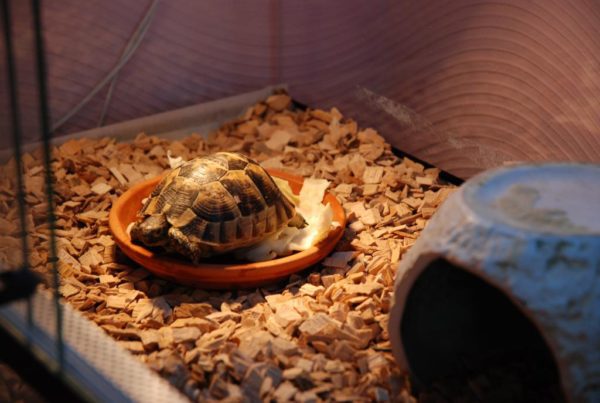
Suitable for reptiles: steppe.
Advantages:
- allows you to burrow;
- aesthetics;
- lack of dust;
- cheapness.
Disadvantages:
- inferior to the bark due to its smaller size, therefore it often causes blockage of the intestines;
- not suitable for grinding claws;
- does not absorb well.
Important Features:
- use only for temporary containment;
- choose alder, beech or pear.
corn soil
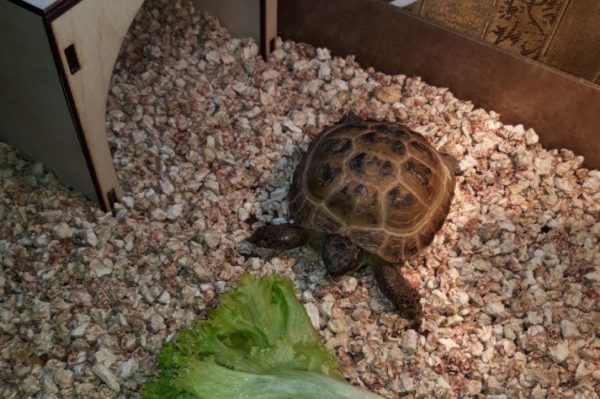
Suitable for reptiles: steppe.
Pros:
- absorbs and retains liquid;
- lack of dust;
- nice smell;
- aesthetics.
Cons:
- not suitable for grinding claws;
- may cause eye irritation.
IMPORTANT: Turtle corn litter is only suitable for temporary housing.
Pebbles
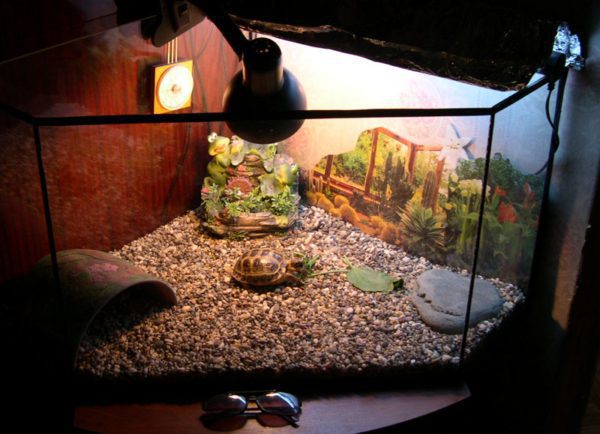
Suitable for reptiles: steppe, mountain.
Advantages:
- helps to grind claws;
- gives off heat;
- aesthetics;
- can be reused;
- leaves no dust.
Disadvantages:
- hard to care for;
- makes noise when digging;
- not suitable for burying;
- does not absorb liquids;
- quickly soiled with feces.
Usage Tip:
- avoid sharp edges or stones that are too small;
- rinse thoroughly and bake in the oven before use;
- place in the feeding area.
Sawdust
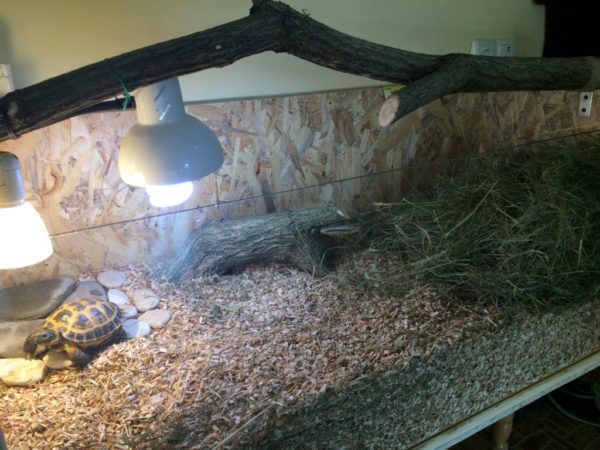
Suitable for reptiles: desert, steppe, tropical.
Pros:
- digestible;
- allows you to burrow;
- absorbs and retains liquid.
Cons:
- dusty;
- not suitable for grinding nails.
What you should pay attention to:
- use only for temporary containment;
- do not require additional processing.
coco substrate
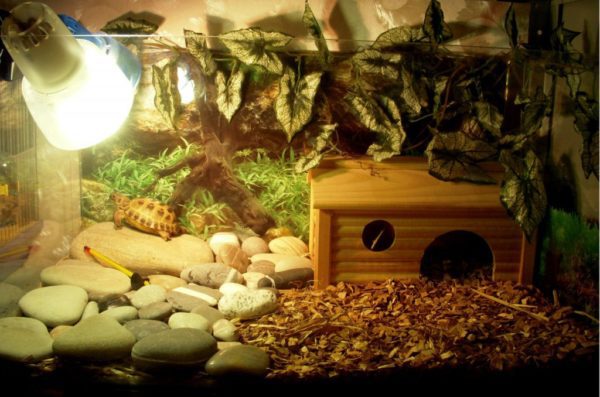
Suitable for reptiles: tropical.
Advantages:
- can be reused;
- antibacterial;
- absorbs and retains liquid;
- aesthetics.
Disadvantages:
- swollen coconut fiber is not digested and leads to intestinal obstruction;
- dusty without additional moisture;
- not suitable for grinding nails.
Usage Tips:
- for reuse, rinse the filler through a sieve and dry in the oven;
- enclose the feeding area with ceramic tiles.
Hay
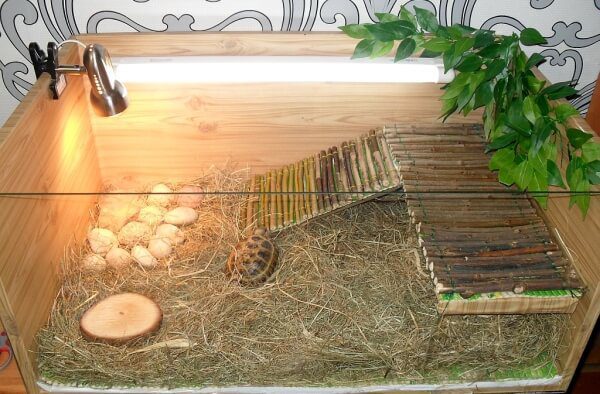
Suitable for reptiles: all kinds.
Pros:
- combines the functions of soil and food source;
- allows you to burrow;
- aesthetics.
Cons:
- not suitable for grinding claws;
- dusty;
- does not absorb well and becomes moldy with excess moisture.
Hay for turtles must be thoroughly cleaned of sticks and other sharp objects that can injure the reptile.
IMPORTANT! When choosing soil, focus on the habitat of the pet. For the Central Asian tortoise, filler for steppe species is suitable.
Summing up
Of the options considered, it would be better to use moss or pebbles as the only type of soil or choose one of the mixed options:
- earth + bark / sand / moss;
- hay + bark / moss;
- pebble + chip.
The following are under the ban:
- newsprint impregnated with toxic printing ink;
- gravel with too sharp edges;
- cat litter, which causes blockage of the intestines when the granules are swallowed;
- pine or cedar bark containing volatile oils harmful to reptiles.
Regardless of the type of filler chosen, do not forget about cleaning it. A complete replacement of the soil is carried out 2-3 times a year, but the feces will have to be removed several times a week to avoid the development of pathogenic microflora.
Fillers for the terrarium of the land turtle
4.7 (93.79%) 206 votes



